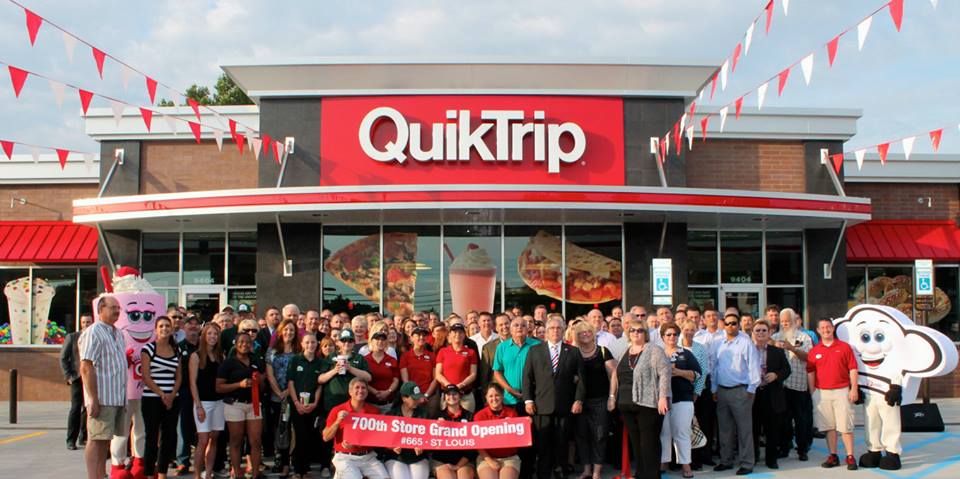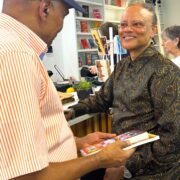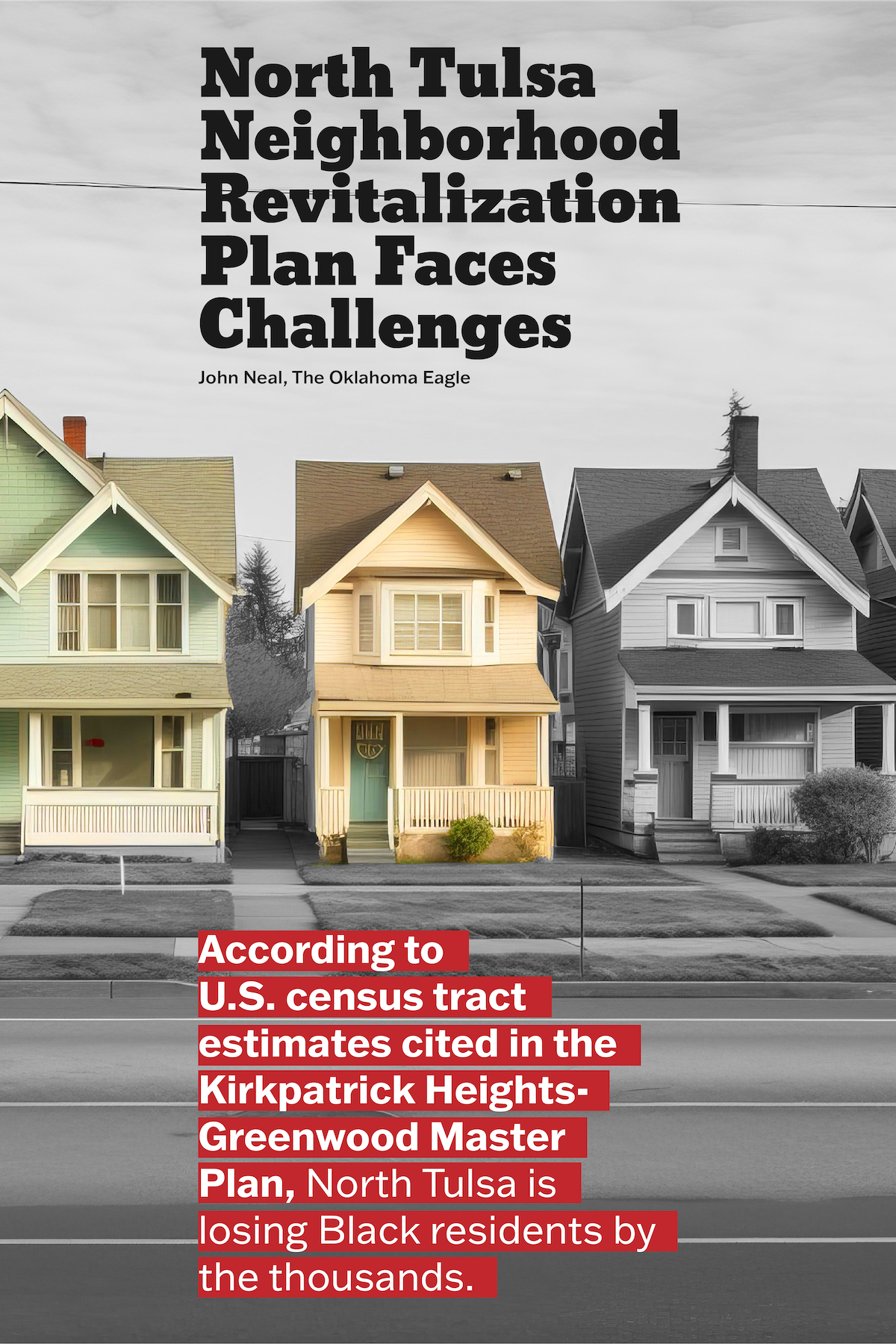
LOCAL & STATE
John Neal
Illustration The Oklahoma Eagle, Adobe Images
Will The Plan Accelerate Gentrification?
This is the second in a series of three articles examining the development and implementation of the Kirkpatrick Heights-Greenwood Master Plan.
According to U.S. census tract estimates cited in the Kirkpatrick Heights-Greenwood Master Plan, north Tulsa is losing Black residents by the thousands.
The vital objectives of the Master Plan are to stem that outflow, and stabilize and revitalize north Tulsa neighborhoods. The Tulsa Development Authority (TDA), through its PartnerTulsa staff, is finalizing a legal process to begin implementing the plan. And yet, enforcing the master plan faces substantive obstacles.
After reviewing concerns expressed by north Tulsans in the stakeholder input process of the development of the Master Plan and from information in the Plan’s documents, The Oklahoma Eagle will detail those obstacles in this article.
The rapidly changing geographic composition of north Tulsa is at the center of the obstacles. The northside is undergoing shifting populations, demographic changes, and potential market difficulties.
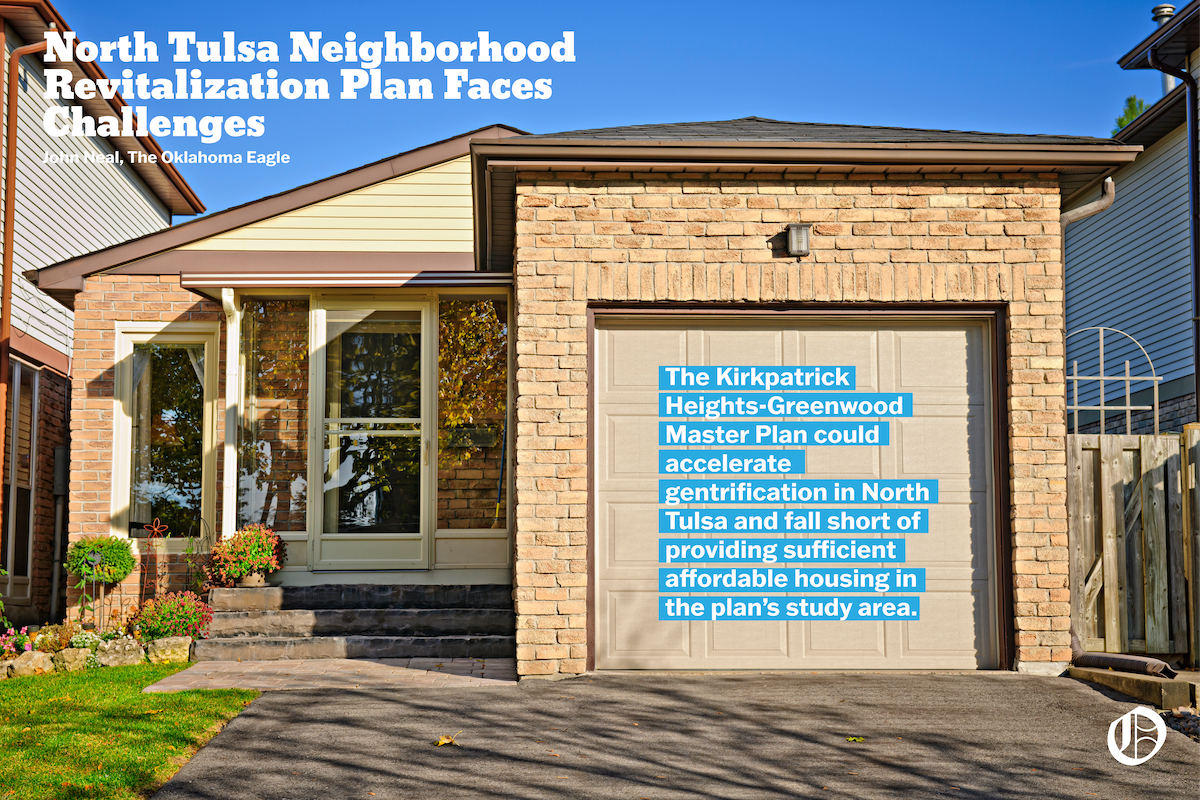
Against that background, the Master Plan could accelerate gentrification in north Tulsa and fall short of providing sufficient affordable housing in the plan’s study area. As the revitalization plan points out, gentrification and affordable housing are central concerns for north Tulsans.
Additionally, twenty one months after the Plan’s adoption, the 70 acres pinpointed for development – involving three sites in north Tulsa – have seen no change. Senior PartnerTulsa spokesperson Jonathon Butler told The Oklahoma Eagle staff in an interview that “much work is going on behind the scenes.” However, plan documents reflect some important early timeline milestones have been missed. And the project implementation has not been as rapid as some north Tulsa stakeholders had hoped.
The Kirkpatrick Heights-Greenwood Master Plan was formally adopted in December 2022. Adoption was preceded by a sixteen-month planning process that drew heavy participation from hundreds of north Tulsans.
In an interview with The Oklahoma Eagle, Erran Persley, City of Tulsa’s new Economic Development Officer, said that the city is seeking to move up the timeline for bringing the Master Plan into fruition.
“I was concerned at first because the timeline was too spread out,” Persley said.
He added that he recently discussed the Kirkpatrick Heights project with Garry Clark, the new CEO of PartnerTulsa, and Clark pledged to move up the pace of the project. Persley said Clark seeks to have the CDC for the project legally structured and ready to go by late November 2024.
“And I’m excited about the work the whole (Kirkpatric Heights) team has done,” Persley added.
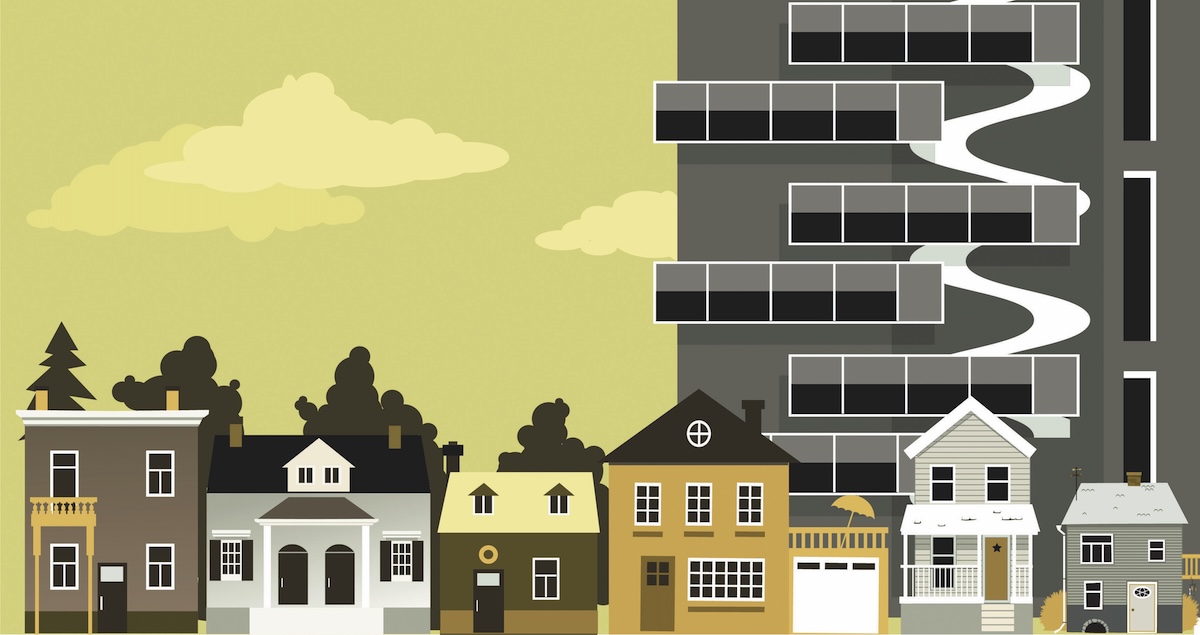
North Tulsa Neighborhood Revitalization Plan Is Underway - Read More
The Master Plan designates improvements to three sites between Kirkpatrick Heights and MLK Jr. Boulevard, north of I-244. Potentially challenging is the development of 45 acres dubbed the Core, in which the plan intends “to rebuild a vibrant and resilient mixed-use community.”
Gentrification concerns
North Tulsa and the smaller master plan “study area” have seen steady population outflow – the Master Plan and the “Existing Conditions Report” appendix document this trend.
During 2010-2020, while the City of Tulsa had a modest population growth, north Tulsa’s population declined by five percent, and the study area north of Highway I-244, where the improvements are planned, decreased by approximately eight percent.
Moreover, the report states, “There are an estimated 11,000 fewer Black people living in the broader north Tulsa area in 2020 compared to 2010.” Similarly, in study area census tracts just north of the highway, there was a decrease “of nearly 900 Black individuals” in a much smaller geographic area.
A principal concern expressed by study participants was racial and economic gentrification in northside neighborhoods. The Existing Conditions Report, citing statistics for the same decade, reflects a proportional decrease in the north Tulsa Black population from 41% to 34% and in the study area north of downtown from 78% to 58%.
Concurrently, the white population percentage increased in all these areas. The Master Plan repeatedly states that racial and economic gentrification is a “legitimate concern” of north Tulsans.
The Master Plan aspires to use the mixed-use district to draw some Black people back into north Tulsa. However, because the downtown population immediately adjacent to the Core development tract is growing at a 25% clip, a more likely scenario is a population expansion from downtown to the Core. That downtown tract was 82% white in 2020, with much higher incomes.
Affordable housing
Affordable housing was another principal concern of north Tulsans participating in the planning process. The plan describes the residential units as “a variety of low to medium-density housing types that are not currently being developed in north Tulsa.”
The Master Plan reports that 1,765 housing units are in the study area, with a median home price of approximately $159,000. The March 2023 Tulsa Citywide Housing Assessment White Paper puts the median home price in the broader north Tulsa community at $110,000.
The same Assessment report states that the “safe and decent rent minimum” for multi-family units in Tulsa is $987. But lower rents are typical in north Tulsa. Private market sources report that the average rent in central north Tulsa is around $750.
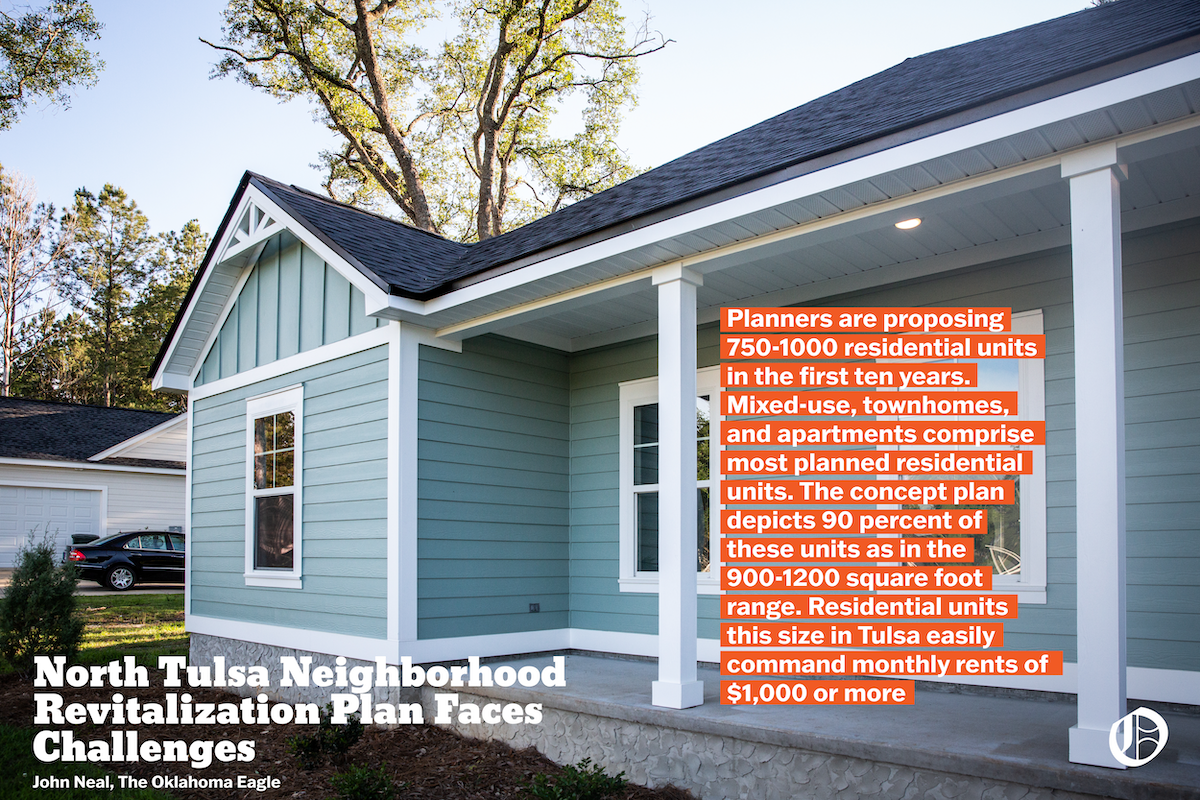
This information is necessary because the Master Plan does not estimate the rent or purchase prices of the residential units. The planners are proposing 750-1000 residential units in the first ten years. Mixed-use, townhomes, and apartments comprise most planned residential units. The concept plan depicts 90 percent of these units as in the 900-1200 square foot range. Residential units this size in Tulsa easily command monthly rents of $1,000 or more.
In an interview with The Oklahoma Eagle, Tulsa mayoral candidate Monroe Nichols said he believes that a certain level of gentrification is to be expected to occur in the development of the Kirkpatrick Heights/Greenwood project.
“There is probably a slight argument for some level of gentrification, right?,” he said. “But the question is, what is the broader plan for affordable housing? Because Kirkpatrick house is fine. What are we doing in addition to that? I think saying there’s no silver bullet project that’s going to solve every problem.”
Income and housing
Housing cost information must also be coupled with household incomes to determine the affordability of the proposed housing stock in the new mixed-use district. The median income in the study area is $28,574, or about 60% of the Tulsa citywide average.
Affordability is federally defined as housing that costs no more than 30% of household income, plus utilities or roughly 33% for households at or below the median household income.
Thus, for housing to be affordable, a median household income in the study area should devote no more than $785 in rent payments, including utility costs. This falls far short of the $987 the City of Tulsa cites as the minimum necessary for “safe and decent” housing. Applying this formula is more complicated for home purchases but yields a similar result.
While the Master Plan describes housing planned in the Core as a mix of housing stock ranging from affordable to luxury homes, it does not specify a number or percentage of affordable residential dwelling units. A quick check with PartnerTulsa revealed no target existed when this article was written.
Without assistance or mitigation measures to reduce costs, most residential units in the proposed mixed-use district will be beyond the means of residents living in the study area surrounding it.
The situation will only worsen with time if current housing market trends continue. The Tulsa Citywide Housing Assessment found that Tulsa median home sale prices increased by more than 40% from 2018 to 2022, while rents increased by 22% over the same four years.
Community Development Corporation
The Master Plan adds, “North Tulsans have justifiable concerns about not only affordability for existing and future generations but about the adverse consequences of real estate being bought up by investors from outside the community.”
Affordable housing must be provided for median-income or below households to rent or purchase homes in the Core. This can be done in various ways, including binding developer agreements, housing assistance programs, and gap funding supplementing construction costs from government or philanthropic sources.
PartnerTulsa is working with the Advisory Committee to establish a non-profit Community Development Corporation (CDC) to implement the Master Plan. CDCs have been used successfully for decades in many U.S. cities. They blend social and economic justice goals using government and philanthropic grants with private sector investment.
Key to their success has been community representation on the board to be appointed by the Tulsa Development Authority and affordable housing. Once established, they become a non-government entity and must be relied upon to implement the Kirkpatrick Heights-Greenwood Master Plan faithfully.
This article was written by John Neal, a staff contributor at The Oklahoma Eagle and former city planner. The third and final article in this series discusses issues in the Master Plan with Jonathon Butler, a senior PartnerTulsa community development official.


